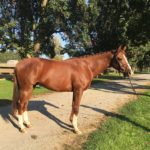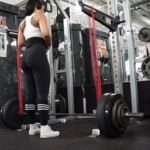As a whole, the Thoroughbred is best known as a racehorse, designed and bred solely to perform at his peak in a burst of sheer power, determination and raw speed unmatched in most other breeds. But what happens when that athlete’s racing career is over?
Understanding the rigors of the training process—from the time that horse is sent to a training center as a yearling or 2-year-old, to potentially running his first race—helps us understand how the Thoroughbred we see today has developed, both physically and mentally.
In a blink of an eye, when that horse’s racing career ends and he enters what we call “retirement,” it is often anything but the common conception of retirement. Many Thoroughbreds are brought into our lives straight from the track. Many are inexpensive purchases or even giveaways, arriving as raw material that, in some cases, people have not taken the time to evaluate or work with. Yet these horses are often expected and trained to look and act a certain way in order to catch up to their warmblood counterparts in the show world. We find that one of the problems with training Thoroughbreds from the track is this unrealistic timeframe, this rush to have them “catch up” to their age groups in other breeds.
What I would like to share is my in-depth experience with a variety of Thoroughbreds from many different exposures: a timeline of expectations, training and care through examples of equines with whom I have worked or been involved. I hope that by reading about my experiences, you will gain not only understanding and knowledge, but a new appreciation for the breed, if you don’t have that already. Let’s saddle up for the journey!
To read more about Priscilla Godsoe’s background and her philosophy about retraining off-the-track Thoroughbreds, click here.







